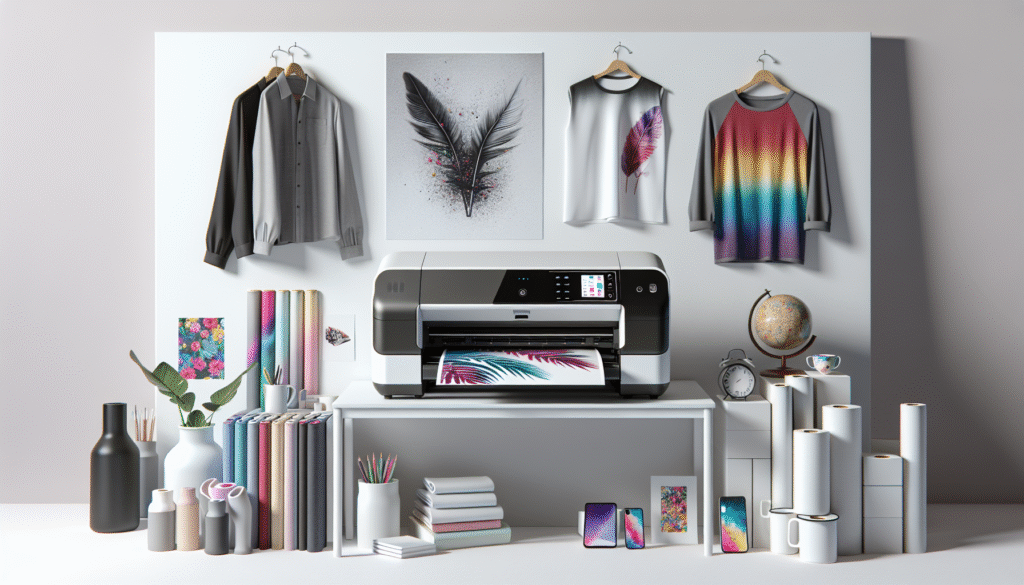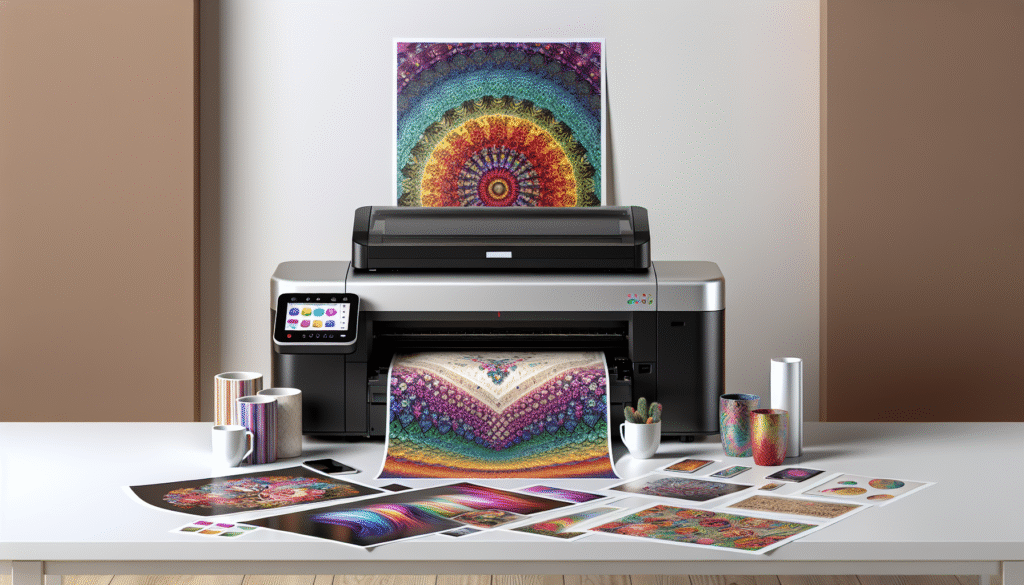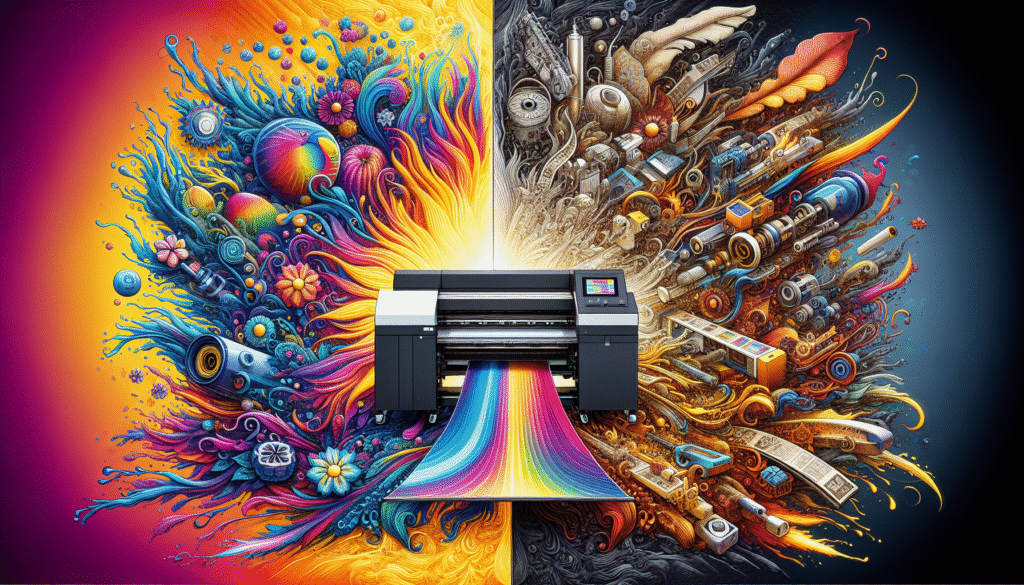Are you feeling overwhelmed by the endless options available when it comes to choosing the right dye-sublimation printer for your niche? You’re not alone—this decision is a bit like picking the perfect avocado: there’s a lot to consider and some trial and error involved. But don’t worry, we’ve got our heads wrapped around it and are ready to share the insights, peppered with a dash of humor to keep things light. Let’s navigate the colorful world of dye-sub printing and determine which printer is perfect for you and your creative aspirations.
Why Go for Dye-Sublimation?
Dye-sublimation printing has become the rave among artists, entrepreneurs, and DIY enthusiasts alike. It’s like the secret sauce in a chef’s recipe—it elevates the end product to a whole new level. Unlike other printing methods, dye-sublimation offers vibrant, durable prints that are embedded into the fabric or substrate rather than sitting on top of it. This means no fading, cracking, or peeling. Substrates stay as lively as our favorite pets, even after multiple washings. So why would we choose anything else?

Understanding Dye-Sublimation
At the very core, dye-sublimation involves a two-step process. Initially, a design is printed onto a special transfer paper using sublimation inks. The magic happens when heat and pressure are applied, transforming the solid dye into a gas without ever turning into a liquid—a process called sublimation. This gas infiltrates the substrate and locks the colors in a state of vibrant permanence. Think of it like infusing a delightful aroma into a room full of guests; it pervades everything around.
Best Applications for Dye-Sublimation
Before diving into the technicalities of printers, let’s have a little chat about applications. Dye-sub printing is perfect for specialty items and niches because it doesn’t shy away from challenges. It excels at creating:
- Custom Apparel: Jerseys, hats, t-shirts, and those quirky socks everyone loves.
- Home Decor Products: Think custom pillowcases, curtains, and even rugs.
- Promotional and Personal Gifts: Mugs, keychains, phone cases, and mousepads that scream individuality.
- Photography and Fine Art Prints: High-quality prints on photo paper or canvas.

Considerations for Choosing the Right Dye-Sub Printer
It’s time to get our tools ready and dive into the factors that will influence our choice of dye-sublimation printers. We know you’ve got questions, and we’re here with answers.
Printer Size and Printing Capacity
This is where we ask, “How big are your ambitions?” If your niche involves printing large banners or all-over garment prints, we need to look at wide-format printers. If personalized mugs and coasters are more your thing, a smaller, desktop model may suffice. Here is a quick guideline:
| Printer Size | Ideal For |
|---|---|
| Small (Desktop) | Mugs, phone cases, small apparel, ornaments |
| Medium (Large desktop or small-format) | T-shirts, cushions, mousepads, small banners |
| Large (Wide-format) | Banners, all-over shirts, large-scale decor, fabric rolls |
Print Quality and Color Reproduction
No one wants a washed-out version of their masterpiece. Consider the ink quality and resolution; these are like the ingredients in a gourmet meal. Check for:
- Resolution: The higher the better—measured in DPI (dots per inch). This determines the sharpness of images.
- Color Gamut: This refers to the range of colors the printer can reproduce. Wider is better, capturing more vibrancy and accuracy.
- Ink Technology: Some printers use 4-color (CMYK) systems, while others use 6 or more. A wider range usually translates to richer prints.
Speed and Volume
We get it—time is as precious as a cup of perfectly brewed coffee. Speed matters, especially if you’re running a business. Consider the following:
- Print Speed: Measured in prints per hour, or the time it takes for a single print.
- Volume: How many prints you’ll need daily or monthly. Some printers are better for high-output environments.
Connectivity and Software Compatibility
In this glorious age of technology, seamless connectivity is like having WiFi in-flight—it makes everything smoother. Evaluate printers based on:
- Ports and Connectivity: USB, Ethernet, and Wi-Fi capabilities can impact convenience.
- Software Compatibility: Check if your design software easily integrates with the printer. Some printers come with specialized RIP (Raster Image Processor) software to manage color and output quality.
Cost and Maintenance
Let’s talk about costs—always a vital topic, like discussing who will win the next round of trivia night. Beyond the upfront price tag, think about:
- Running Costs: Consider the cost of inks, transfer papers, and substrates.
- Maintenance: Ease of maintenance and availability of service centers or replacement parts.
Key Dye-Sub Printer Brands and Models
It’s like browsing a candy store; each option is tempting. Let’s highlight some of the popular dye-sublimation printer brands and models. Keep in mind your personal needs and preferences; think of it as finding the one that understands you.
Epson
Known for delivering impeccable quality, Epson offers both desktop and wide-format options. They’re the big-name industry players and never fail to impress with innovations.
- Epson SureColor F570: Great for smaller formats, perfect for those stepping up from hobbyist to semi-professional.
- Epson SureColor F9470: Wide-format and an industry favorite for large volume and spectacular color accuracy.
Sawgrass
Famed for craft and small-business-friendly solutions. They’re like that cozy local restaurant that everybody loves.
- Sawgrass Virtuoso SG500: Perfect for small business and personal projects; excels in color quality and user-friendly software.
- Sawgrass Virtuoso VJ 628: If you want to scale up, this model enables medium-format printing with premium finish options.
Roland
If versatility were a person, it would be wearing a Roland badge. Their printers are robust and adaptable.
- Roland VersaSTUDIO BT-12: Ideal for on-demand garment printing—perfect for kiosks or small businesses.
- Roland Texart XT-640: For those who aspire to master textile printing. This is where the pros play.
Evaluating the Right Substrates
Printers alone don’t lead us to triumphant success, much like how a well-cooked dish needs the right spices. It’s crucial to choose appropriate substrates to pair with our dye-sub printers. Poly-coated materials are typically the go-to because they allow the dye to bond effectively.
- Polyester and Polyester-Coated: Apparel, bags, flags, and fabric-based products.
- Ceramics and Metal: Mugs, plates, photo panels, and signs.
- Hard Substrates: Phone cases, coasters, mousepads with a poly-coating.
Tips for Successful Dye-Sublimation Printing
To push our success rate through the roof, ensure we pay attention to the finer details. It’s like adding a pinch of salt to bring out the essence of a dish.
- Accurate Color Profiles: Use ICC profiles suited to your specific equipment and substrates.
- Temperature and Pressure: Follow strict guidelines—variations can impact print quality.
- Experiment with Settings: Every printer will have a bit of a learning curve, so don’t be afraid to tweak.
- Regular Maintenance Checks: Keep things running smoothly, much like how we maintain personal fitness.
The Future of Dye-Sub Printing
The journey doesn’t end here—technology is continuously advancing. We can expect to see enhancements in sustainability, with ecologically friendlier inks and more efficient machines. Plus, the range of substrates will expand, bringing even more opportunities for creativity.
In essence, as we become more familiar with the possibilities, the potential applications are as boundless as our imagination. It’s an exciting time to be in the dye-sublimation world, filled with chances to express ideas through the vivacity of color.
To wrap it up, choosing a dye-sublimation printer doesn’t have to be a daunting task. By considering size, quality, speed, connectivity, and overall costs, we can select the right one that fits our unique niche. It’s really about aligning our creative goals with the printer’s capabilities. Once we do that, we’re ready to make our mark on the world—one vibrant print at a time.

